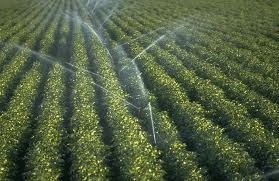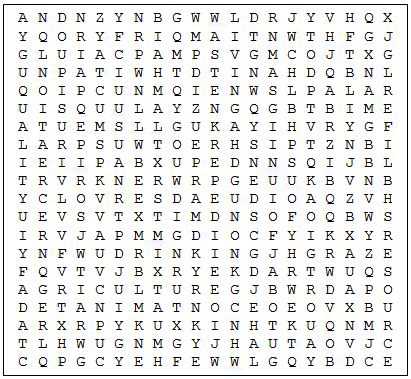NATURE. When we hear the word, we usually think about animals, plants, rocks, trees, water, the cool breeze, the warm sun, and the beautiful scenery it provides us. But did you know that nature actually helps us develop technologies that help to make our lives easier? That process is called biomimicry.  Biomimicry uses nature’s time-tested patterns and strategies to develop products and processes that are well adapted to life over the long haul. Remember, nature has been evolving for over three billion years, therefore, nature knows what works best, and what lasts. Biomimicry is also a new way of valuing nature. Instead of looking at what we can extract from nature, we focus on what we can learn from it, and how we can apply it to solving human problems in a sustainable way.
Biomimicry uses nature’s time-tested patterns and strategies to develop products and processes that are well adapted to life over the long haul. Remember, nature has been evolving for over three billion years, therefore, nature knows what works best, and what lasts. Biomimicry is also a new way of valuing nature. Instead of looking at what we can extract from nature, we focus on what we can learn from it, and how we can apply it to solving human problems in a sustainable way.
Here are some amazing examples of biomimicry.
1. Velcro
The most famous example of biomimicry was the invention of Velcro band fasteners. Velcro was invented in 1941 by Swiss engineer, George de Mestral, who took the idea from the burrs that stuck to his dog’s hair. Under the microscope, he noted the tiny hooks on the end of the burrs that caught anything with a loop, such as clothing, hair or animal fur. The two-part Velcro fastener system uses strips or patches of a hooked material opposite strips or patches of a loose-looped weave of nylon that holds the hooks.
2. Passive cooling
The high-rise Eastgate Centre building in Harare, Zimbabwe was designed to mimic the way that those tower-building termites in Africa construct their mounds to maintain a constant temperature. The insects do this by constantly opening and closing vents throughout the mound to manage convection currents of air — cooler air is drawn in from open lower sections, while hot air escapes through chimneys. The innovative building uses similar design and air circulation planning. The building has large chimneys that naturally draw in cool air at night to lower the temperature of the floor slabs, just like termite mounds. During the day, these slabs retain the coolness, greatly reducing the need for additional air conditioning.
3. Whale Power Wind Turbine
In 2004, scientists at Duke University, West Chester University, and the U.S. Naval Academy discovered that the bumps at the front edge of a humpback whale’s fin greatly increase its efficiency. Compared to smooth surface fins, the bumpy humpback ones have 32 per cent less drag, and an eight (8) per cent increased lift in their movement through air or water. Companies like Whale Power are borrowing this concept to develop turbine blades with bumps called tubercles on the leading edge that provide greater efficiency from wind turbines. For communities and nations that want to switch to wind energy, this can mean a 20 per cent increase in efficiency that will help to make wind power generation fully competitive with other renewable energy sources. The concept is also being applied to hydroelectric turbines, and even irrigation pumps and ventilation fans.
4. Bullet train
The kingfisher is a bird that dives into the water from the air without making a splash, mostly thanks to its highly efficiently-shaped beak. In Japan, ultrafast bullet trains created a loud booming sound as they exited the tunnel. Additionally, the nose of the train pushed air at high speeds, creating a wall of wind that also slowed down the train. Engineer and bird enthusiast, Eiji Nakatsu took inspiration from the shape of the kingfisher’s beak to design a train that would eliminate the loud booming sound, while at the same time making the trains up to 20 per cent more fuel efficient.
5. Friction-reducing Sharkskin
One of the best ways to reduce our reliance on fossil fuels is to achieve more efficient use of the energy we consume. Seen under an electron microscope, sharkskin is made up of countless overlapping scales called dermal denticles (or “little skin teeth”). The denticles have grooves running down their length in alignment with water flow. These grooves prevent the formation of turbulent swirls of slower water, making the water pass by faster. The rough shape also  discourages parasitic growth, such as algae. The most common application of this is in Speedo’s Fastskin FSII swimsuits which made their appearance at the 2008 Beijing Olympics. Scientists have also been able to replicate dermal denticles in the bottom of boats. This enables cargo ships to burn less oil, and does not require cleaning chemicals for their hulls.
discourages parasitic growth, such as algae. The most common application of this is in Speedo’s Fastskin FSII swimsuits which made their appearance at the 2008 Beijing Olympics. Scientists have also been able to replicate dermal denticles in the bottom of boats. This enables cargo ships to burn less oil, and does not require cleaning chemicals for their hulls.
To learn more about biomimicry, log on to http://www.biomimicryinstitute.org/
Find the following hidden words to learn how humans take inspiration from nature:
Sharkskin, denticles, kingfisher, bullet train, whale, wind, turbine, termite, mound, velcro, burr, nature, sustainable, technology.

You can share your ideas and questions by sending letters to: “Our Earth, Our Environment”, C/O EIT Division, Environmental Protection Agency, Ganges Street, Sophia, GEORGETOWN or email us at eit.epaguyana@gmail.com



.jpg)










